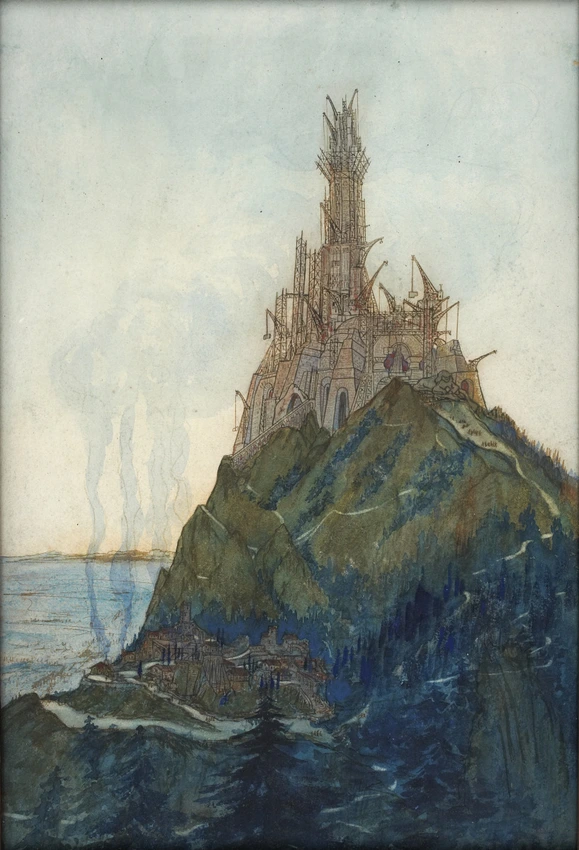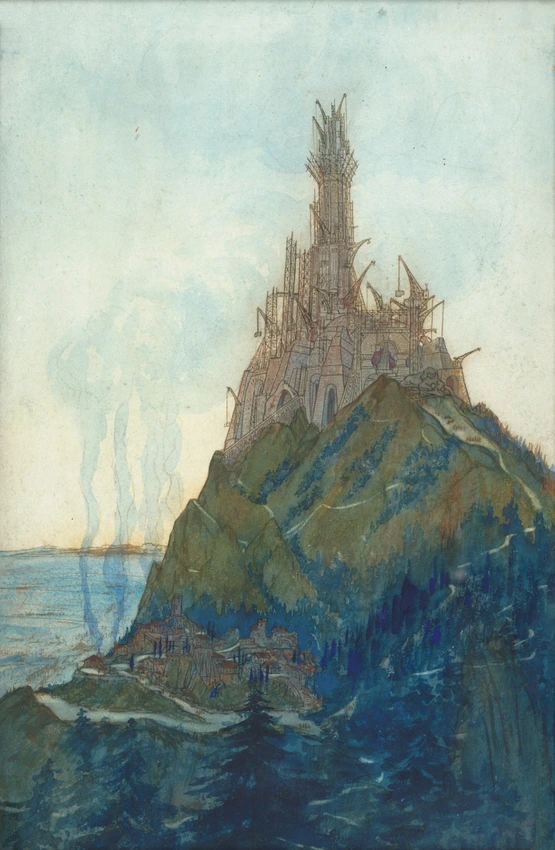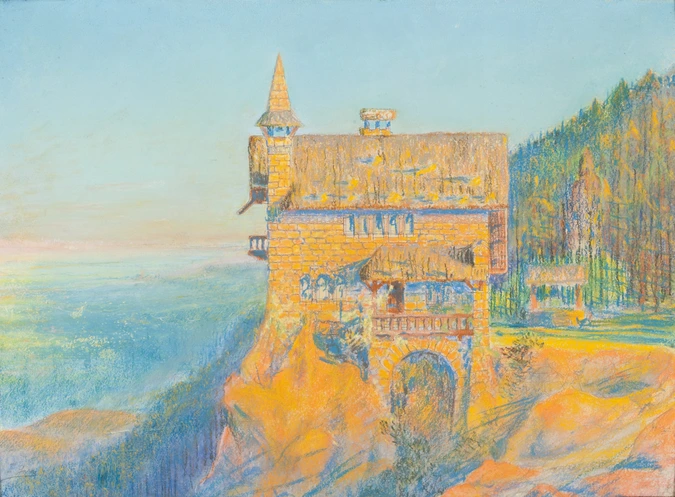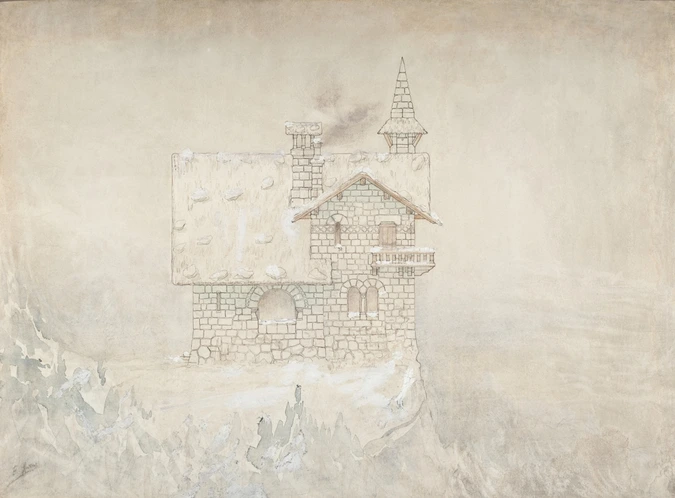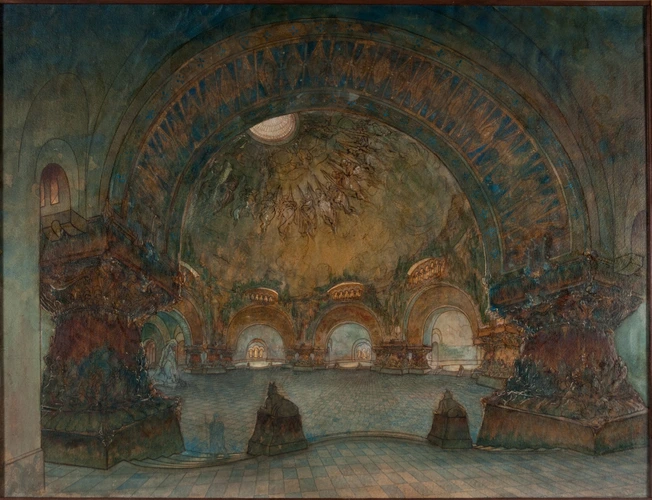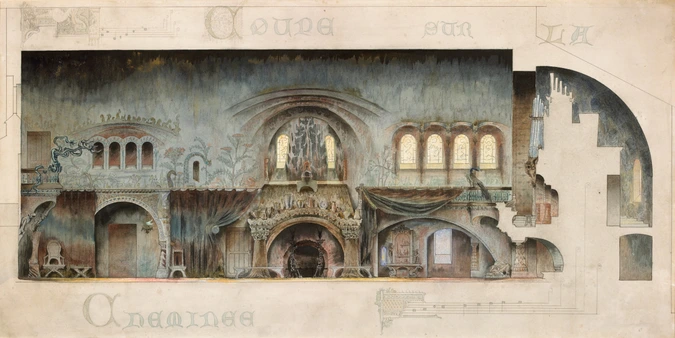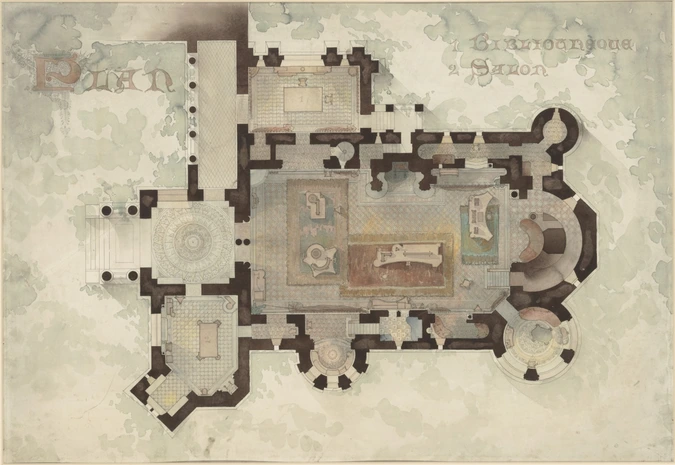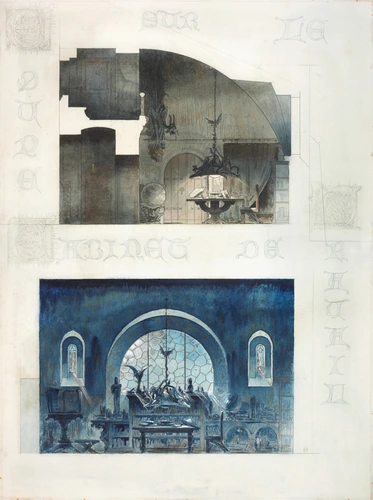Temple à la Pensée, dédié à Beethoven, vue en cours de construction
François Garas was an original, mysterious architect whose lively, imaginative works sought to translate ideas, sensations and musical rhythms into architectural structures. He studied at the École des Beaux-Arts, where he made friends with Tony Garnier and graduated in 1894 but refused to practice architecture on the grounds that it was too pragmatic. Along with Henry Provensal, Gabriel Guillemonat and Henri Sauvage he took part in a rebellious exhibition called Architects' Impressions organised in 1876 by Frantz Jordain, who sought to "break the old moulds" and struggle against "the mental slavery produced by the exclusive study of Greek and Roman architecture and knowledge of nothing but Italian painting".
He exhibited increasingly oneiric projects at the Salon de la Société Nationale des Beaux-Arts from 1897 to 1914, Artists' Interiorssuggesting an alchemist's laboratory, particularly his Temples for Future Religions, dedicated to Beethoven, Wagner, Life, Death and Thought. The two musicians were celebrated in his private pantheon on a par with Edgar Allan Poe and Charles Baudelaire, John Ruskin, Edouard Manet and Jean Carriès. Garas made a stir at each Salon and in 1899 even drew praise from Arsène Alexandre, one of the severest architectural critics of the time who wrote for Le Figaro: "There are no really new works in the Champ de Mars, except Mr Garas' fantastic, powerful project for a temple".
Garas worshipped Beauty, Art and the Absolute, but in 1913, overwhelmed by material difficulties, he gave up architecture altogether and took over the brickworks founded by his father. The museum has almost all his imaginative works.
